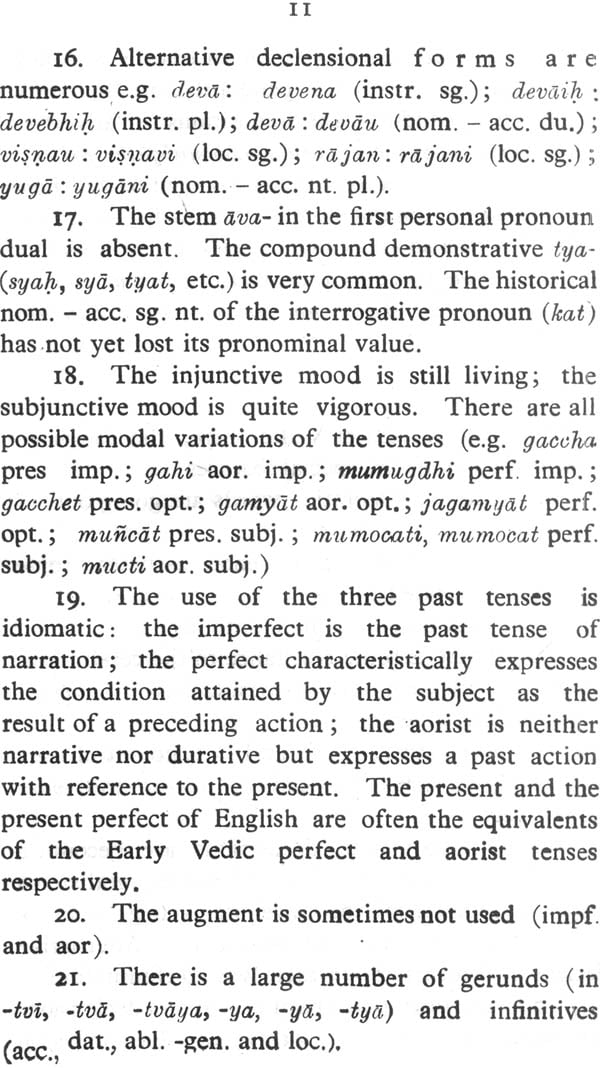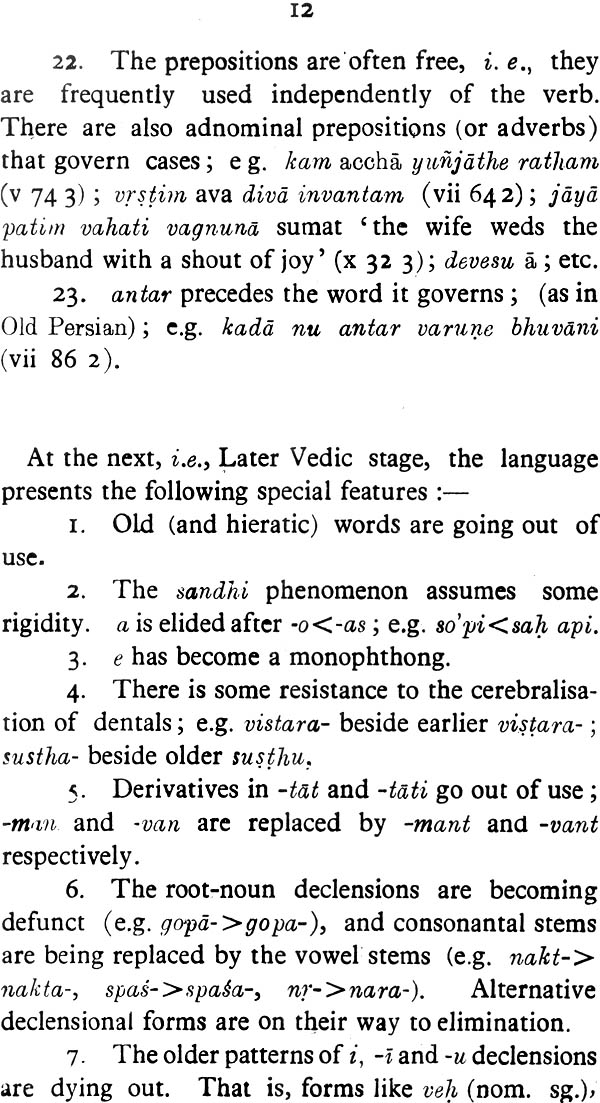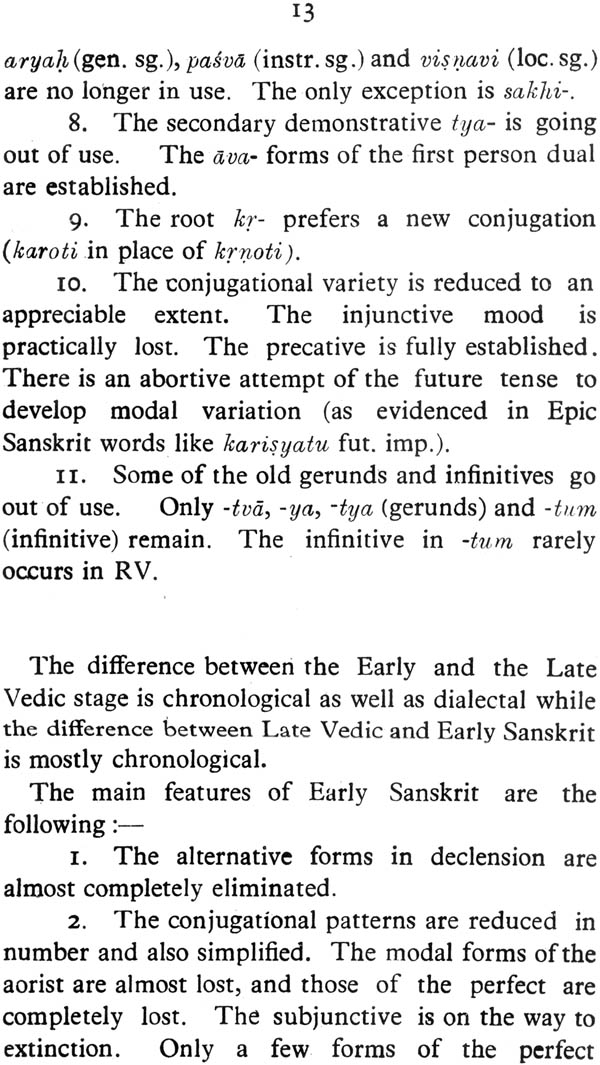
History and Pre-History of Sanskrit
Book Specification
| Item Code: | NAL073 |
| Author: | Sukumar Sen |
| Publisher: | Rabindra Bharati University |
| Language: | English |
| Edition: | 2001 |
| Pages: | 64 |
| Cover: | Paperback |
| Other Details | 8.5 inch X 5.5 inch |
| Weight | 80 gm |
Book Description
The present monograph comprises the three lectures delivered at the University of Mysore on September 17, 18 and 19, 1957. The First lecture describes in brief the development of Old Indo-Aryan from Early Vedic Classical Sanskrit through its two intermediate stages Late Vedic and Early Sanskrit. The name Sanskrit was unknown to Panini. I have ventured to suggest that Kalidasa was one of the first to use the name unmistakeably for the language. It may be noted that he does not use any name for Middle Indo-Aryan or Prakrta but refers to it as “the easy” language (Kumara-sambhava vii.90). Professor Sivarama Sastry tells me that the name Sanskrit occurs in the Ramayana (Sundara-kanda) where Hanuman first approaches Sita and thinks about the language in which he would accost her. He is doubtful whether “Samskrta” speech, fit for a Brahmin, would be opportune as Sita might then mistake him for Ravana in disguise. This reference to the Samskrta speech is of course earlier than Kalidasa’s, but it probably means the “correct diction of a Brahmin”. Anyway “Samskrta” here (samskrtam vacam) is an adjective.
As a matter of fact our ancient forefathers did not recognise any foreign language. To them language either was “purified” or “cultivated” (samskrta) or was “off-standard” (apabhrmsa) or “rustic” (prakrta). Speech was to them a divine thing ; it was the force that impelled the arrow of Rudra, it was the immortal vitality that sustained the gods, and all that is good and auspicious in them was contained in speech (bhadraisam laksmir nihitadhi vaci). They also knew that speech is like a river (Sarasvati) flowing, meandering, fertilizing and sustaining. It was the chaste speech that obtained ambrosia or Soma for the gods and it was the unchaste speech that brought defeat to the Asuras inspite of their seniority and superiority.
The Second lecture deals with the earlier stages through which the language had passed before it took shape as Early Vedic. In this pre-history also there had been four stages; Proto-Indo-Aryan (we may also call it, less precisely, Pre-Sanskrit), Indo-Iranian (or Aryan), Indo-European, and Indo-Hittite. I have also given some account of the morphology of Hittite and for two reasons. It has not yet been taken up for study by linguistic scholars and students in India. This is one reason. The other is that inspite of the remoteness of connection between Hittite and Sanskrit a comparative study of the two languages is bound to be interesting in view of the fact that Sanskrit (and Aryan) has preserved some features that are attested only in Hittite. I have mentioned Heteroclisis. Another good instance is the imperative ending – tu (as well as-ntu). As these endings occur only in Indo-Iranian it was formerly thought that they are Aryan innovations. But after the discovery of Hittite their remote antiquity has been admitted.
The Third lecture is on “Spoken Sanskrit”. By Spoken Sanskrit I mean something different from what Sanskrit scholars think. It is not Sanskrit as has been spoken from the days of Patanjali (and earlier) to our own times. It means that basic form of Old Indo-Aryan which was spoken by the people in general and which was the direct and immediate source of Middle Indo-Aryan which was spoken by the people in general and which was the direct and immediate source of Middle Indo-Aryan. Mr. Walter Maurer first drew my attention to the importance of this “Spoken Sanskrit”. I dealt on the topic very briefly in my presidential address to the annual general meeting of the Linguistic Society of India held at Deccan College, Poona, in November 1956. Thanks to the University of Mysore, I have now been able to find an occasion to develop the theme.
I may mention here that beside Buddhistic (Hybrid) Sanskrit this “Spoken Sanskrit” had another and a much more debased form. It was used all over India by the half-educated and by ill-baked scholars as a sort of “Dog” Sanskrit. There are few records of this speech worth mention, but there is one very late record of some length. It is the very interesting book entitled Sekasubhodaya compiled in Bengal sometime in the fifteenth or the sixteenth century.
| page | ||
| I | Introduction | i |
| II | History of Sanskrit | 1 |
| III | Pre-History of Sanskrit | 18 |
| Spoken Sanskrit | 36 | |
| Abbreviations | 52 | |
| Bibliography | 53 |









